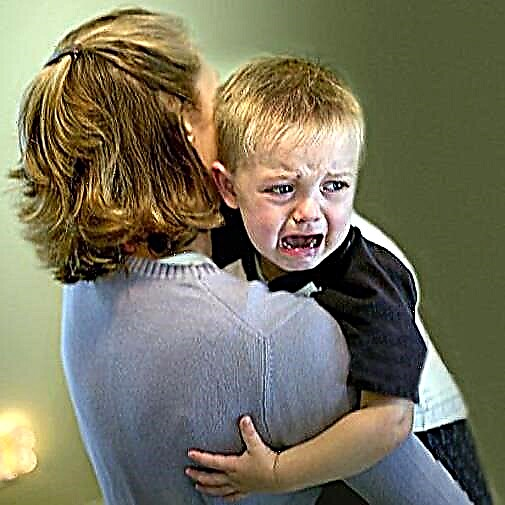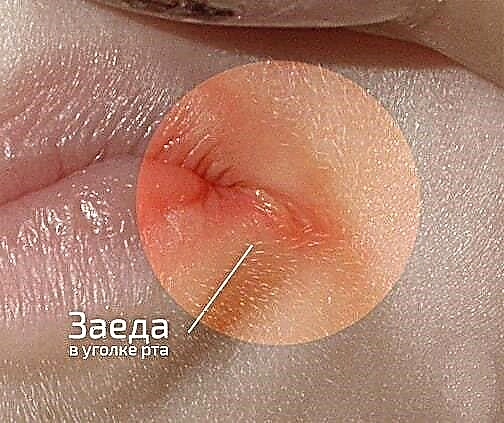Nutrition is one of the main factors in the formation of a healthy body. The correct organization of feeding and constant monitoring of the process are equally important. Therefore, the question of how long to feed a newborn with breast milk is by no means idle. After all, excess food is just as harmful as malnutrition.

Another meal
Duration of feeding
Food is the main source of substances vital for the development of the body. Mother's milk is considered the most balanced in this regard. It provides the baby with the energy necessary for growth, normalization of metabolic processes, and neuromuscular activity.
Important! The younger the toddler, the more energy costs it has. If the child does not receive enough food, it is difficult for the body to maintain basic life functions.
Overeating gives the baby discomfort in the form of profuse regurgitation and a distended tummy. More importantly, an excess of nutrients that have entered the body can cause serious disruptions in physical and mental development. A large load on the digestive system leads to disorders in the activity of other organs.
Nutrition should meet the standards established for the age-related physiological needs of newborns. Therefore, the amount of breast milk should be constantly adjusted as the baby grows.
Colostrum Feeding Frequency
The first time the baby is applied to the breast 6-8 hours after birth. For 3 days, the child feeds on colostrum - a thick, sticky yellowish liquid.

Breast milk and colostrum
Note! In terms of energy value, colostrum exceeds mature milk and contains more nutrients. It is easily absorbed in an unchanged state by the intestinal walls, which contributes to the rapid assimilation of the product.
The first day the baby's stomach can hold 7-10 g of colostrum per intake. This is enough to start the digestive mechanism. To provide the body with a daily rate of energy, the newborn is applied to the breast every 3 hours. Weakened and premature babies are fed 10-12 times a day.
From the 2nd day, the baby already eats up to 10-20 g of colostrum with a daily rate of 90 g. Therefore, the frequency of breastfeeding is reduced to an average of 9 visits with an interval of the same 3 hours.
Duration of feeding
The first 3 days of the newborn is best fed on demand. Colostrum is quickly digested and the baby wakes up because he wants to eat. Mom puts the baby to her breast and waits for him to be full. Some children cope with the process quickly, others savor it slowly. Therefore, it is difficult to decide whether the toddler is full or not.
To understand how much to feed a newborn in time, you should not pay attention to the behavior of the child. He may take a few sips and fall asleep under his chest. This does not mean it is time to stop feeding. The kid needs to be messed up and forced to eat further.
Another baby, having drunk the prescribed rate, continues to suckle. But he does this not because he is hungry, he is just comfortable with his mother. If the baby sucks, but does not swallow, then he is full.

Process lasting 20 minutes
In order to have a guarantee that the little one has received the portion he needs, experts recommend being guided by the standard time standard for breastfeeding a newborn. The process should last 20-25 minutes (with proper nipple capture).
Volume allowance for single feeding
From the 2nd week of life, the frequency of breastfeeding decreases. Indeed, at one time, the baby is already able to absorb more milk, it digests it slower than colostrum. Whether the baby is full or not depends on the quality of the breast fluid.
In one feeding, the baby can suck out more milk, on the other - less. For newborns in the first weeks, the volume rate is calculated using the formula, based on age:
10 x n,
Where:
- n is the number of days of the baby;
- 10 - the average amount of milk per time, ml.
If a newborn is a week old, he should receive 70 ml of nutrient fluid for 1 feeding. The optimal number of visits per day for a given age is 9. Based on this, the daily rate for a healthy baby is 630 ml (70 x 9).

How to determine the correct amount of milk?
From the 14th day, nutrition is calculated according to other criteria (but also taking into account age). In order to understand in this case how many milliliters a baby should receive at a time, first determine the daily requirement.
Milk norm for newborns
| Way | Description |
|---|---|
| By weight | The calculation of daily nutrition for a normally developing child is carried out according to the following parameters: • from 2 weeks to 2 months - 1/5 of body weight; • up to 4 months - 1/6; • up to six months - 1/7. For the rest of the period up to 1 year, children need 1 liter of liquid food. |
| By calorie content | The richer the food, the more satisfying the baby is. If we evaluate human milk by energy, then 1 liter contains 700 kcal. With this in mind, calculate the daily rate per 1 kg of body weight: • in the 1st quarter of the year, 120-130 kcal is required; • in the 2nd - 110-120 kcal; • in the 3rd - 100-110 kcal; • in the 4th - 90-100 kcal. The decrease in indicators is due to the fact that the body develops most actively during the first months of life. |
The action of the table can be shown with an example:
- A child born with a weight of 3.5 kg should have a body weight of 4-5 kg at 2 months. This means that he is entitled to 0.8-1 liters of milk per day. The average frequency of feeding during this period is 6 times. For 1 visit, the baby needs 133-166 ml of liquid.
- When calculating volumes by energy value, such indicators are obtained. At 2 months, a toddler needs 500-650 kcal per day. For 1 feeding, the body should receive about 83-108 kcal. By translating the nutritional value of milk into volumes, you can get that the proper amount of milk at a time is 120-155 ml.
The above calculations are averaged, so there is no need to strictly adhere to them. A calm child may well have enough 130 ml per dose, more active - 160 ml will not be enough.
Note! Weakened and premature babies increase the frequency of feedings, this must be taken into account when calculating.
How often to alternate breasts
In Soviet times, doctors taught mothers to give the baby one breast for feeding, leaving the other to be filled for the next call. But, if the glands produce little nutrient fluid, the baby simply does not gorge on and will demand more. Therefore, it is wiser to feed him from the other breast.
If you listen to the opinion of the authority of all mothers in the world - Benjamin Spock, then feeding with the simultaneous use of both glands is rational... But only if you adhere to these rules:
- starting one feeding from the left breast, in the next round, first give the right one;
- the duration of sucking on the first breast is 12-15 minutes, during which the child will completely empty the "bins";
- shifting the baby under the second nipple, they hold him there for another 10 minutes, during which he will have time to get enough.

Benjamin Spock - Master of Pediatrics
Additional Information. Mom doesn't need to worry about both breasts empty. Complete emptying of the glands stimulates active lactation. So the baby will not stay hungry.
Dr. Komarovsky on feeding babies
Russian women are used to trusting the candidate of medical sciences, Yevgeny Komarovsky. He is not only a supporter of natural feeding, but also a "rolling" regime, which is adhered to within reasonable limits.
Newborn baby feeding frequency
If you constantly adjust the food intake to a certain hour of the regimen, the mother risks provoking stress in the hungry baby. You should also not blindly practice on-demand feeding, otherwise the number of visits will increase by 2-3 times, the woman will be deprived of the opportunity to rest and do housework.

The main authority of Russian mothers
It is more rational to choose an averaged option, subject to the following principles:
- even in a flexible schedule, the next feed should not come earlier than 2 hours after the previous one;
- for monthly newborns, the optimal length of rest between sessions is 3 hours; with age, the gap between feedings gradually increases;
- if the baby is kept on the regime, and he demanded food a little earlier than the appointed time, he should be fed (half an hour will not play a role);
- at night it is advisable to take a 6-hour break in feeding; but if the baby has woken up and asks for food, it is better to satisfy his request (perhaps in the last session he was not fed enough).
Up to six months, it is worth adhering to the recommendations of Dr. Komarovsky regarding the frequency of feeding. Then the child is injected with solid food, here the timely production of gastric juice is already important. Therefore, the baby is gradually accustomed to the regime.
Single rate of breast milk
In his programs E.O. Komarovsky advises mothers to monitor the weight gain in babies. On average, a newborn should gain 150-200 g per week. If the real indicator differs significantly from this norm, it means that the child is either malnourished or receives more food than he should.
To control nutrition, you can use the WHO recommendations for determining the norms for the volume of breast milk (they are described above). How much liquid an infant actually drinks can only be determined in practice. For this, the house must have a scale.
The baby is weighed just before and immediately after feeding. The difference between the indicators will be the amount of milk you drink.
Weighing alone is not enough - the baby can drink 280 ml in 1 dose, in another - only 100 ml and sleep peacefully further. Therefore, control weighing is carried out at each feeding for a day or two. Only then can one judge the filling of the glands with milk and compliance with the norms. Although this is not an argument yet. The baby can drink a lot, but will not be full due to the poor nutritional value of mother's milk. Our grandmothers were still able to determine how high in calories it is.

How to determine the amount eaten
For newborns 1-2 months, the degree of satiety was determined by the number of soiled diapers (there were no diapers then):
- when the baby has emptied a little more than 12 times, this is the norm;
- if the number is reduced to 8, you should not be particularly upset - in order to saturate the child, the frequency of feedings is increased;
- contamination of diapers per day less than 7 times - evidence that the baby is malnourished.
Note. The more nutritious the milk, the more actively the organs involved in metabolism work. If the baby overeats, the excess will come out through the esophagus with copious regurgitation.
Causes of Malnutrition and Overfeeding of Babies
Children who are undernourished slow down in development and suffer from a mass of pathologies. But the constant overfeeding of the baby does not bode well. The crumbs who are overweight are at risk of getting vascular atherosclerosis and heart problems. A metabolic disorder further leads to liver and pancreatic diseases. As a result, by the age of one year, the baby can already be diagnosed with obesity.
A newborn can be malnourished or overeat for several reasons. The most basic is the mother's failure to comply with the frequency and duration of feeding. It is not necessary to adhere to strict rules in this process - flexible scheduling principles are fine.
In order for the breast fluid to saturate the baby, the woman needs to monitor her diet. The more balanced and healthy the mother's diet, the more nutrients the baby will receive. Then even the minimum one-time norm for full development will be enough for him.
If the baby does not have enough milk from one breast, the other should be given. You can't leave your baby half-starved. If there is still fluid in the glands after feeding, it should be expressed, although some people ignore this event. The more you empty your breasts, the more full they will become for the next feeding.

Mom's nutrition
In order for the baby to grow up calm, vigorous and gain weight normally, maximum attention should be paid to its nutrition. Breastfeeding is the "gold standard" that provides the body with everything necessary for the adaptation of newborns and their further development. Proper nutrition of babies is not chaotic - it obeys certain norms and principles, which should become like "Our Father" for the mother.



